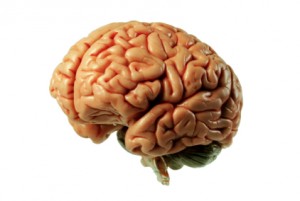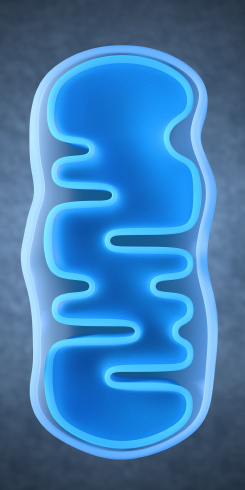Salt Implicated in Autoimmune Diseases
Autoimmune diseases, in which the body’s immune system begins to attack healthy tissue, have become much more common in recent decades. Some autoimmune problems are related to overproduction of TH17 cells, immune cells that produce a particular inflammatory protein (interleukin-17), but it is not clear why some people’s bodies start producing too many TH17 cells. Three studies published in the journal Nature in 2013 suggest that salt may play a role. They were recently summarized in Scientific American.
In the first study, researchers developed a model of how TH17 cells are controlled. In the second, they observed how immune cells are produced over a period of several days. The researchers noticed that a protein called serum glucocorticoid kinase 1 (SGK1), which is known to regulate salt in cells, seemed to act as a signal for TH17 production. Mouse cells in high-salt environments had more SGK1 and produced more TH17. The third study confirmed the connection with salt using both mouse cells and human cells.
While mice with multiple sclerosis (an autoimmune disease) worsen on a high-salt diet, it is not clear that salt in the diet is related to TH17 production. It is also not clear that slowing TH17 production is the answer to autoimmune diseases since autoimmunity differs across patients and disorders. However, in any event, low-salt diets are recommended for general health concerns, such as blood pressure.
Childhood Adversity and Epigenetic Pockmarks
 Maltreatment in childhood may have a lasting impact on health through epigenetics. Epigenetics refers to the idea that events and substances in the environment can affect the structure of DNA by adding chemicals (often methyl or acetyl groups) onto DNA and histones (structures around which DNA is wound) in such a way that the DNA is more or less likely to be transcribed and activated to produce new proteins. Thus our DNA is shaped not only by the genetic inheritance we receive from our parents, but also by events in the environment (which do not alter the sequence of DNA but can influence how easily the DNA gets turned on to produce proteins in our bodies.)
Maltreatment in childhood may have a lasting impact on health through epigenetics. Epigenetics refers to the idea that events and substances in the environment can affect the structure of DNA by adding chemicals (often methyl or acetyl groups) onto DNA and histones (structures around which DNA is wound) in such a way that the DNA is more or less likely to be transcribed and activated to produce new proteins. Thus our DNA is shaped not only by the genetic inheritance we receive from our parents, but also by events in the environment (which do not alter the sequence of DNA but can influence how easily the DNA gets turned on to produce proteins in our bodies.)
A 2013 study by Divya Mehta et al. published in the Proceedings of the National Academy of Sciences analyzed the childhood backgrounds of adult patients with PTSD and found that patients’ profiles of disease-related gene expression and DNA methylation in blood differed greatly depending on whether or not they had experienced abuse in childhood. Adults who had been abused as children were about twice as likely to show patterns of DNA methylation accompanying their PTSD-related changes in gene expression.
The implication of this research is that childhood trauma can leave a kind of epigenetic pockmark on a person’s DNA, affecting the way the DNA produces proteins, potentially for the rest of that person’s life.
N-acetylcysteine Improves Blast-Induced Mild Traumatic Brain Injury
Michael E. Hoffer et al. reported in the journal PLosOne in 2013 that veterans with blast-induced mild traumatic brain injury had a better acute outcome when they were given the antioxidant N-acetylcysteine (NAC) within the first 24 hours after the trauma versus when they were given placebo during the same period. Forty-two percent of those receiving placebo had a good acute outcome, while 86% of those receiving N-acetylcysteine had a good acute outcome. Memory loss, sleep disturbance, dizziness, and headaches all improved more in the N-acetylcysteine group. NAC’s benefits diminished when it was given 3 or 7 days after the trauma.
Editor’s Note: These data add to the growing list of neuropsychiatric syndromes in which NAC has shown efficacy. These include schizophrenia, bipolar depression, unipolar depression, cocaine and heroin addiction, gambling addiction, trichotillomania (compulsive hair-pulling), obsessive-compulsive disorder (as an adjunctive treatment to SSRIs), and improvement in irritability and stereotypy (repetitive behaviors) in children with autism.
Given what appears so far to be a relatively benign side effects profile for NAC, and the potential for severe consequences from traumatic brain injury (TBI), a case for wider use of NAC (for example in emergency rooms) might be made.
The mechanisms of action of NAC in different syndromes remains to be clarified. Researcher Michael Berk used NAC in schizophrenia and bipolar disorder and more recently in unipolar depression because it has antioxidant properties. Peter Kalivas found that NAC can normalize glutamate in the reward area of the brain through actions on the cystine-glutamate exchanger, and it also increases clearance of glutamate by increasing the glutamate transporter in glial cells. NAC decreases the amount of cued glutamate release in a part of the brain called the nucleus accumbens, which may be helpful in recovery from pathological habits. NAC also has anti-inflammatory and perhaps neuroprotective effects, and it increases brain-derived neurotrophic factor (BDNF), which protects neurons and is important for long-term learning and memory. Which of these many actions is important in the treatment of PTSD is not yet known.
Obesity and Bipolar Disorder
David Bond presented research at the 2013 meeting of the International Society of Bipolar Disorder about the connections between obesity and the course of bipolar disorder. Bipolar disorder has some of the highest rates of obesity among all psychiatric illnesses. Obese patients with bipolar disorder have more episodes of depression, more suicide attempts, worse response to psychiatric medications, and more cognitive impairment between episodes of illness.
Bond also found that higher body mass index (BMI) was associated with reduced white and gray matter volume in the brain, greater cognitive impairment, increased risk of Alzheimer’s disease, and increased glutamate concentration in the hippocampus (which is potentially neurotoxic) and decreased NAA (a marker of neuronal integrity). Those with 7% weight gain or higher in the first year of treatment show a greater loss of volume in the frontal and temporal lobes.
Editor’s Note: These data again speak to the importance of maintaining good lifestyle habits such as proper diet and exercise to attempt to slow or prevent the development of obesity. Also avoiding medications for bipolar disorder with the greatest liability for weight gain and using some that can help with weight loss would be good topics for discussion with a treating physician.
Preventing Cognitive Decline in Bipolar Disorder
Here are some suggestions from BNN Editor-in-Chief Robert M. Post, MD for preventing cognitive decline in patients with bipolar disorder.
1. Prevent Episodes with Long-term Prophylaxis
2. Remove Sedating or Impairing Drugs
3. Add Folate to Decrease Homocysteine
4. Treat Depression to Remission
5. Consider Adding:
a. Bupropion (Wellbutrin) for Mood and ADHD
b. Modafinil (Provigil) for Attention and ADHD
c. A Stimulant for ADHD
6. Add Lithium at 150mg/day for Neuroprotection in Mild Cognitive Impairment
7. Add Levitiracetam at 125mg/day to Decrease Hippocampal Hyperactivity
8. Treat Dementia Symptoms Early with:
a. Memantine (Namenda) AND/OR
b. Acetylcholine Esterase Inhibitors Such As Donepezil (Aricept)
9. Consider Adding an Anti-inflammatory Agent
Iodine Deficiency in Pregnancy Bad for Fetus
 A study published in the Lancet reports that even mild iodine deficiency during pregnancy can have adverse effects on IQ and cognitive development in the fetus. This occurs because of the deficiency’s effects on thyroid function.
A study published in the Lancet reports that even mild iodine deficiency during pregnancy can have adverse effects on IQ and cognitive development in the fetus. This occurs because of the deficiency’s effects on thyroid function.
Editor’s Note: Eat fish, drink milk and take a vitamin supplement with 140 to 150mcg of iodine.
Dark Chocolate May Have Some Health Benefits
Very dark chocolate made mostly from cocoa beans may be good for you. Cocoa is high in flavanols, which belong to a class of antioxidants called flavonoids. Dark chocolate has been associated with lowered risk of heart attack and stroke, improvements in cognition, lower body mass index (BMI, a weight to height ratio), dilation of blood vessels and lower blood pressure, and improved cholesterol profiles. This is despite containing a lot of saturated fat (a good trick, indeed). Among a study of 37,000 Swedish men, individuals who ate at least 1.8oz of dark chocolate a week had a 17% lower risk of stroke than those who ate less than 0.4oz a week.
Moderation is important. Two ounces of dark chocolate contain about 440 calories, so while a little may be good, a lot may not be so good. Watch out for milk chocolate and highly processed chocolates with great quantities of sugar added, they contain more calories and fewer health benefits.
A balanced diet and regular exercise are keys to good health, but don’t feel too badly if you top off a balanced meal with a tantalizing piece of the dark stuff.
Lithium Increases Hippocampal Volume
 There is some evidence that lithium can affect brain structure, particularly the size of various parts of the brain. A study by Hajek et al. presented at the 2013 meeting of the International Society of Bipolar Disorders examined patients with bipolar disorder who had either received lithium for at least two years (37 patients) or had received under three months of treatment with lithium (19 patients), and compared the size of the hippocampus in these two groups and one control group (50 people). The patients with bipolar disorder all had the disorder for at least 10 years (25 years on average) and had had a minimum of five episodes.
There is some evidence that lithium can affect brain structure, particularly the size of various parts of the brain. A study by Hajek et al. presented at the 2013 meeting of the International Society of Bipolar Disorders examined patients with bipolar disorder who had either received lithium for at least two years (37 patients) or had received under three months of treatment with lithium (19 patients), and compared the size of the hippocampus in these two groups and one control group (50 people). The patients with bipolar disorder all had the disorder for at least 10 years (25 years on average) and had had a minimum of five episodes.
Those treated with lithium long-term had greater hippocampal volume than the non-lithium patients (despite having spent more time in episodes of illness), and equal volume to healthy controls. Measurements were collected via magnetic resonance imaging (MRI), and analyses were done two different ways to avoid being confounded by the changes lithium may have on water balance in the brain, a phenomenon that was recently found to affect MRI images.
Editor’s Note: These data add to the large number of studies in animals and humans indicating that lithium, in addition to preventing episodes and suicides, may have neurotrophic and neuroprotective effects.
Lithium Reverses Effects of Oxidative Stress on Mitochondrial Function
Oxidative stress has been implicated in a wide range of illnesses, but what is it exactly? Our bodies use the oxygen we breathe to burn the fuel we get from food, and while this is a natural process, it produces byproducts known as free radicals, which are unstable molecules that can strip electrons from other molecules in a process called oxidation. Antioxidants (such as vitamin C) act as a source of electrons, helping keep other cells stable and healthy. Oxidative stress refers to the stress on our bodies from the normal effects of free radicals combined with environmental stressors like tobacco smoke or radiation.
In work presented at the 2013 meeting of the Society of Biological Psychiatry, Anna Andreason showed that over-activity of neurons increases oxidative stress through the production of reactive oxygen species (ROS). These are a type of free radicals that can damage cells in two ways: nitrosylation of proteins (adding nitric oxide to a thiol molecule), and oxidation, which results in more lasting effects on synaptic structures. The chemical compound rotenone damages mitochondria by producing ROS, and Andreason found that lithium was able to reverse this production and reverse the adverse effects of oxidative stress.
Lithium Has an Amazing Array of Positive Effects
Editor’s Note: The ability of lithium to protect mitochondria (the energy storehouse of a cell) adds to an increasingly long list of lithium’s neurotropic and neuroprotective benefits. Lithium increases cell survival factors BDNF and Bcl-2, increases markers of neuronal integrity such as N-Acetylaspartic acid (NAA), increases the volume of the hippocampus and cortex, and now helps protect mitochondria from oxidative stress. Lithium also increases the length of telomeres, which cap the ends of chromosome and protect them from damage during the DNA replication that occurs each time a cell divides. Short telomeres are associated with many kinds of medical and psychiatric diseases, as well as shorter life spans. No wonder that in addition to preventing mania and depression it has other clinical benefits, such as preventing memory deterioration, medical mortality, and suicide.
Antibiotic Minocycline Could Improve Bipolar Depression
In an abstract presented at the 2013 meeting of the Society of Biological Psychiatry, Iosifescu et al. reported that the antibiotic minocycline, which has showed anti-inflammatory, neuroprotective, and mitochondrial-sparing effects in animal models, brought about improvement in patients with bipolar depression. Doses of 100mg to 300mg per day were successful in this small open study.
There are some positive placebo-controlled data in patients with schizophrenia who were prescribed this antibiotic. However, until now it had not been studied in bipolar disorder. The preliminary data reported here suggest that controlled double-blind studies of this agent are needed in bipolar depression.
The abstract (#497) can be found in the 2013 convention supplement (9S) to the journal Biological Psychiatry.








